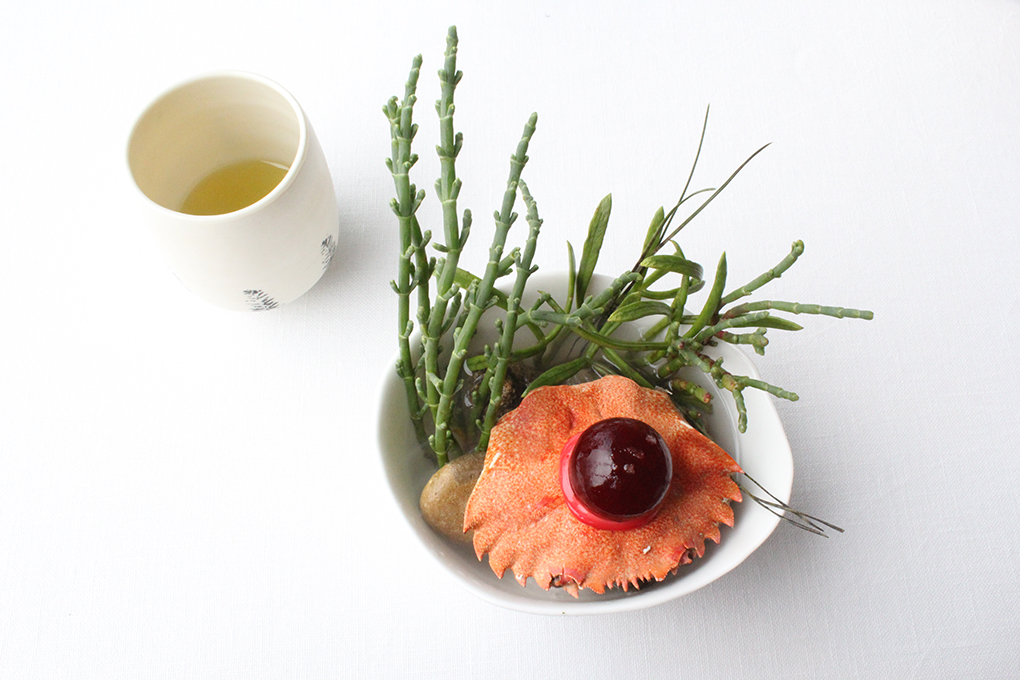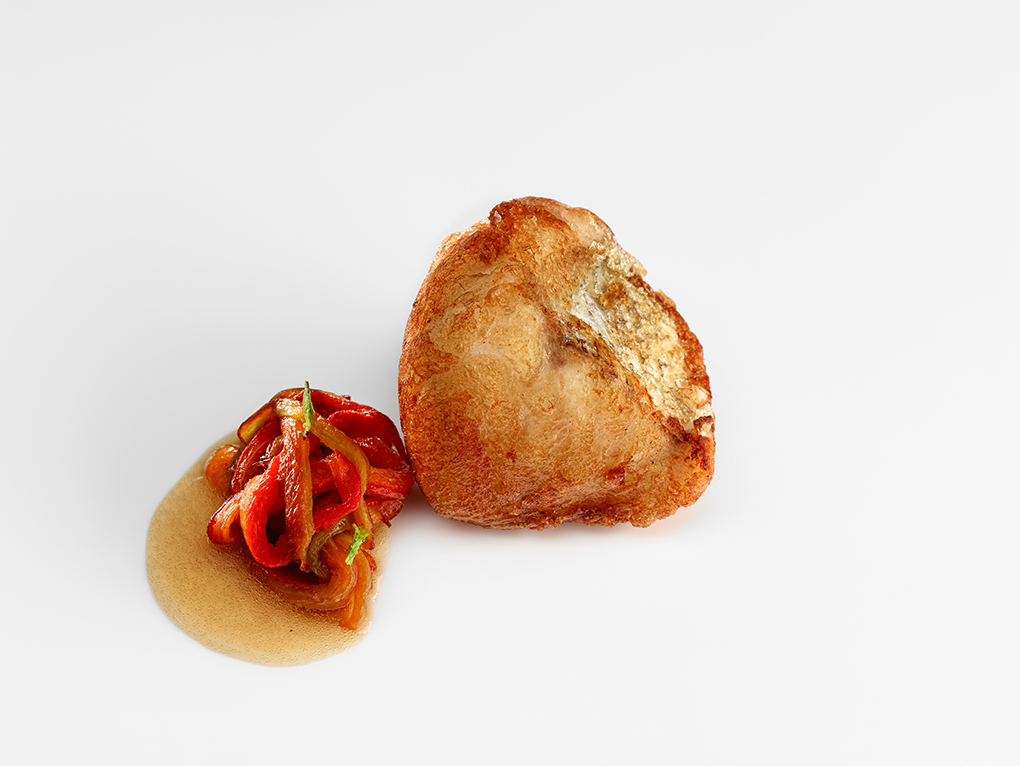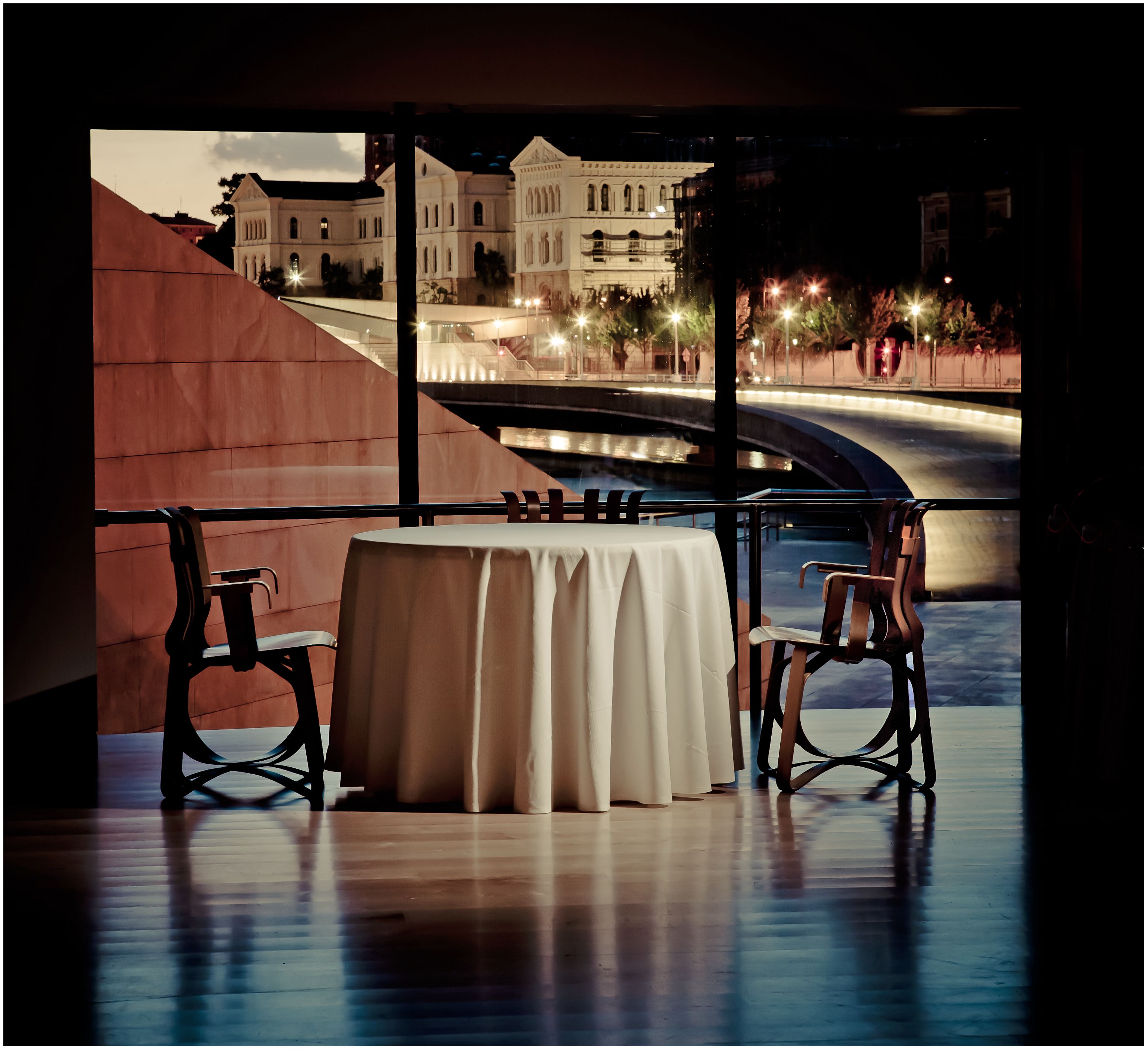Basque-ing in the Flavour of Bilbao
by Kyoko Nakayama
@ 21 Sep 2018

Bilbao itself is a place of great interest: it’s part of the Basque region, a part of Spain with a drastically different culture from the rest of the country. They speak “Euskara”, a language that isn’t even linked to the romantic roots of its Spanish neighbour. Not only that, it was prominent chefs like Juan Mari Arzak from the Basque Country that translated the principles of French nouvelle cuisine and brought them to Spain. Even the first ever Spanish restaurant to be awarded 3 Michelin stars, Zalacaín, was a Basque cuisine restaurant.
To best portray the uniqueness of this long-standing culture, I venture out into the beautiful city of Bilbao to visit two of its great restaurants - to dig into the cuisine of the Basque people and by extension, their way of life.
Azurmendi
Azurmendi was awarded the most sustainable restaurant in the world at the World’s 50 Best Restaurants awards ceremony, along with being placed at number forty-three on the list. This isn’t the first time too: they last won the accolade back in 2014. 41-year old Basque native Chef Eneko Atxa Azurmendi first opened the restaurant back in 2005, but it was only in 2012 during the restaurant’s relocation that he really started to focus on designing a sustainable restaurant that would rise above the rest.

The “new” locale featured a building made from local and recycled materials. If that wasn’t enough, Chef Eneko also installed photovoltaic solar panel roofs and built a geothermal power generator: all to harness nature’s intrinsic electricity-providing potential. What was his inspiration behind all these efforts? “I’m inspired by the environment, it’s where I get all the best ingredients. But it is also fundamental to all our lives: taking care of it should be a social norm. It is our responsibility to pass down our environment to the next generation in the state we received it, or even better.”

Walking into what looks like a huge greenhouse, the story of the restaurant slowly unfolds. The concept is based off a pintxo bar hop, a Basque Country tradition revolving around visiting several “pintxo” bars whilst savouring the small snacks they serve – it’s similar to tapas bars, but with the Basque touch. Upon entry, guests are welcomed by picnic canapés served in quaint baskets. After which, they’re led to the kitchen where they are served a cocktail with the restaurant’s signature small bite, Truffled Egg. The final stop before the main dining room is at the restaurant’s germoplasm bank where they keep plants native to the Basque region. Here, guests are welcomed to try a fermented juice made with local green apple.

The main dining room itself has a stunning view of the surrounding mountains and sprawling vineyards owned by Chef Eneko. Sipping at a glass of Txakoli, a dry white wine produced specially in the north of Spain, diners are presented with dishes made with local ingredients sourced from small producers and fishermen in the region: produce like tear drop peas, raw red millet and dried red pepper are featured. Chef Eneko dabbles with an immense variety of cooking techniques: from the classic roast to the more obscure focused ultrasound. “Broken down, technique is a tool to optimize our results,” he explains, “within the Basque gastronomic culture we’ve inherited from our ancestors; we can find countless recipes inspired by our terroir, the seasons, the knowledge of local producers and above all, traditions passed down by our housewives. Our restaurant is a cookbook that the Basque chefs are using to take this heritage and adapt it for the contemporary stage.”
Nerua
Having been recently awarded a Michelin star, and placed at #57 on the World’s 50 Best Restaurants 2018, Chef Josean Alija’s Nerua is getting some serious spotlight action worldwide. The restaurant first opened its doors in 2011 at the Guggenheim Museum Bilbao, a modern art centre in the city, and has been renowned ever since for its classy mix of sophistication and simplicity.
A journey at Nerua starts with a tour of the open kitchen conducted by Chef Josean himself, and continues inside the restaurant’s main dining space: an open sublime space with fresh white walls that seem to reflect the Guggenheim Museums own design. Chef Josean is more than happy to expouse on the modern state of Basque cuisine, “In the Basque country there are several types of cuisines: the traditional cuisine, the asadores (grill restaurants), the new basque cuisine, and the avant-garde.”

Chef Josean goes on to expand on the traditional Basque cuisine. To him, there are four sauces that are key to some of the culture’s great dishes: pilpil sauce, used for kokotxas (cod throat) and cod fish fillet; bizkaina sauce for cod, tripe and offal; green sauce for fish; and black sauce for txipirones (squids). Chef Josean’s style of cuisine is decidedly avant-garde, and is reflected by the way he improves on the sauces above. For example, his pilpil sauce is cooked in a sous vide at 62 degrees for 6 hours, a big contrast from the usual tradition of candying it in a direct fire for 6 minutes. The result though, is a sauce with added elegance and delicacy that is much more accessible for the modern palate. “Euskadi (the Basque country) has always been famous for its chef and restaurants,” he declares with pride, “and it always has been a place where tradition and the avant-garde can co-exist.”

Chef Josean has been inspired by many culinary masters: Chef Ferran Adrià of El Bulli is one of them, an honour that he owes to a stagiaire he did under his restaurant a couple of years back. If you were to ask him who his mentor is however, you won’t be able to get a name in reply. “The identity of my cuisine was birthed by research, reflection, and observation,” he expresses, “My real mentors are investigation and curiosity.”

This isn’t just talk; Chef Josean cooks in a style that produces some of the cleanest and purest dishes out there, captivating even the culinary greats - Chef Paul Bocuse once identified his food as “one of the best cuisines in his life.” Each and every ingredient he uses is separately cooked in a vacuum pack with measured time periods, quantities, and temperatures. Assembly is a process that is left to later. Coupled with the use of innovative methods like synersis (the freezing of broth and letting it thaw on a filter), his dishes exude a untouched clarity unique to his name and skill.

He has also contributed to cancer prevention research through the improvement of diet to prevent disease. This features heavily in his cuisine where light textures are the mainstay and broths are in abundance, making his courses exceptionally easy to digest. His ambition, along with those of the culinary talents from the Basque Country, is the strength that drives the Basque cuisine through the modern era.
 Bilbao itself is a place of great interest: it’s part of the Basque region, a part of Spain with a drastically different culture from the rest of the country. They speak “Euskara”, a language that isn’t even linked to the romantic roots of its Spanish neighbour. Not only that, it was prominent chefs like Juan Mari Arzak from the Basque Country that translated the principles of French nouvelle cuisine and brought them to Spain. Even the first ever Spanish restaurant to be awarded 3 Michelin stars, Zalacaín, was a Basque cuisine restaurant.
Bilbao itself is a place of great interest: it’s part of the Basque region, a part of Spain with a drastically different culture from the rest of the country. They speak “Euskara”, a language that isn’t even linked to the romantic roots of its Spanish neighbour. Not only that, it was prominent chefs like Juan Mari Arzak from the Basque Country that translated the principles of French nouvelle cuisine and brought them to Spain. Even the first ever Spanish restaurant to be awarded 3 Michelin stars, Zalacaín, was a Basque cuisine restaurant.







